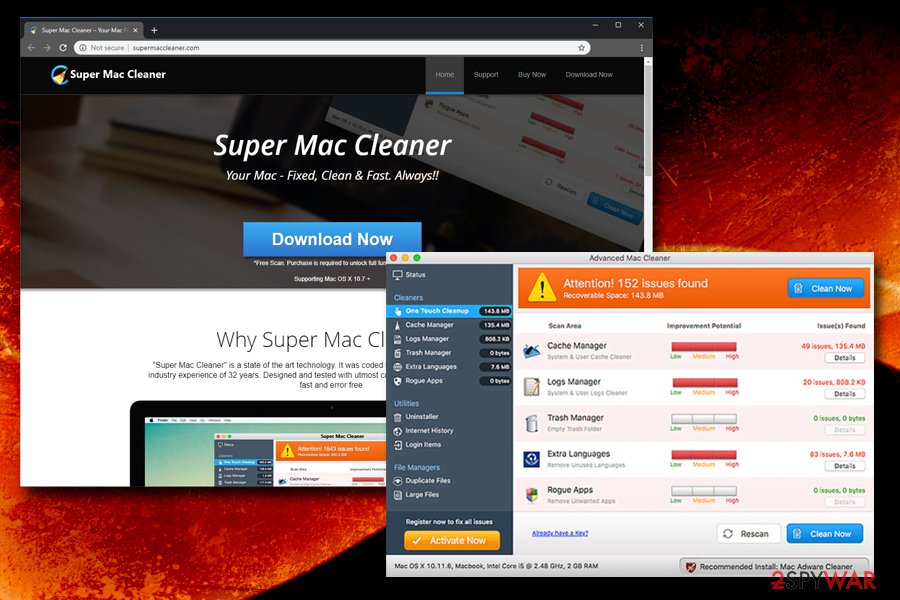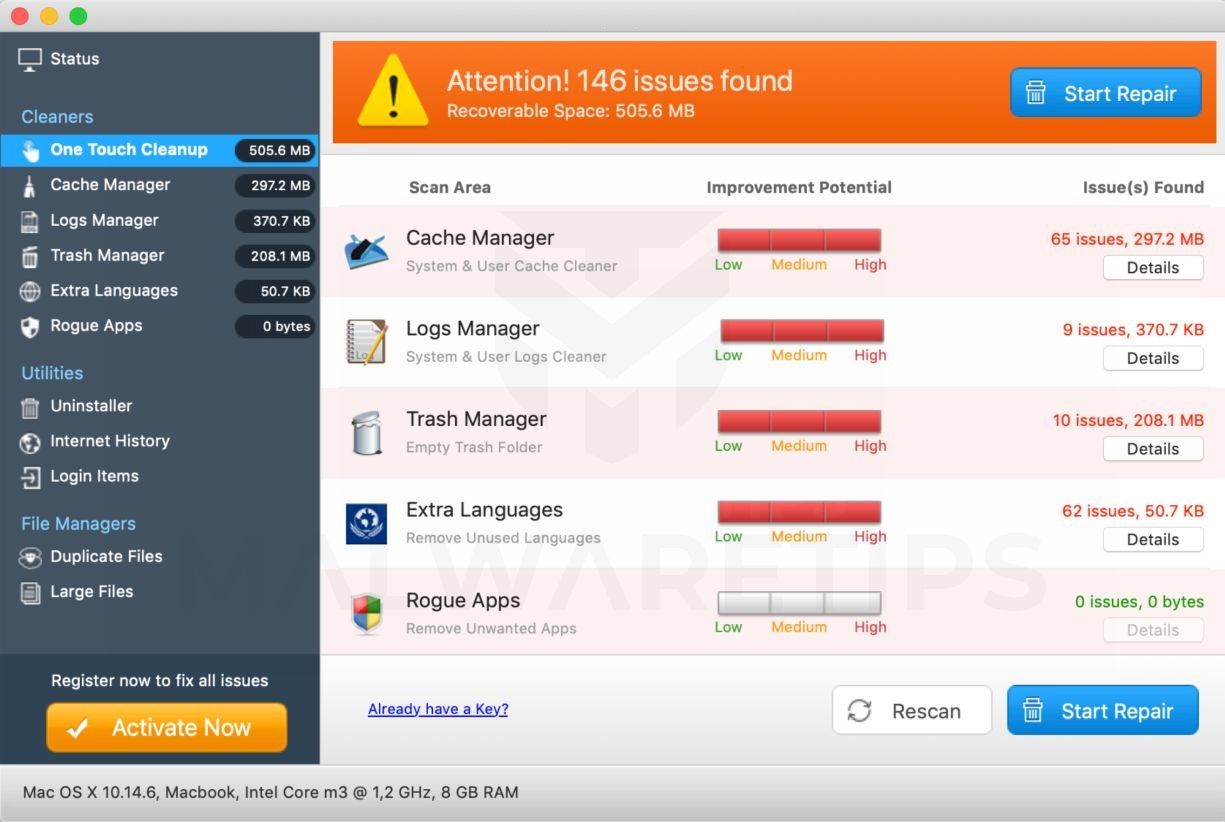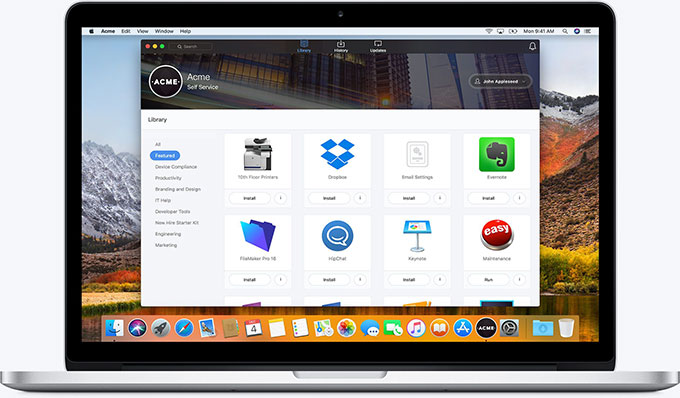Apple Mac Uninstall Reimage Cleaner
- How To Remove Advanced Mac Cleaner. The easiest way to remove Advanced Mac Cleaner tool is by using Mac’s native functionality. Follow these step-by-step instructions to ensure complete uninstallation of the above app: Make sure all the necessary files are backed up before uninstalling Advanced Mac Cleaner.
- Apple Mac Uninstall Reimage Cleaner Clean up mac apps has a chance to become the first state in the nation to pass Fair Repair legislation. HB 2122, or the Fair Repair Act, guarantees our right to repair digital equipment jp computers, refrigerators, cell phones and tractors.
- Uninstall Office for Mac 2011 Note: You must be signed in as administrator to do these steps, and you probably already are, if you're using your own Mac. If you're at a Mac that's part of a network at work, you might have to ask someone in your IT organization for help with signing in as administrator.
In some rare instances, you might need to remove iTunes and related software components before you reinstall iTunes or install iTunes from the Microsoft Store. If you're directed to reinstall iTunes by AppleCare, an article, or an alert dialog, you can do so by following the steps below.
Reimage by Frankwilfried18 Jul 27, 2019 11:31AM PDT So glad I called Tech Support after I experienced the Blue Screen after installing the ReImage Software.
Media that you buy from the iTunes Store or songs that you import from CDs are saved in your My Music folder by default. They won't be deleted when you remove iTunes. Although it's highly unlikely that you'll lose any of your iTunes Library when following the steps below, it's always good practice to make regular backups of your iTunes library.
If you need help downloading or updating iTunes from the Microsoft Store, contact Microsoft for help. If you can’t update or install iTunes for Windows and you downloaded it from Apple's website, learn what to do.
Remove iTunes and its related components
If you need help uninstalling these components, follow these steps:

Uninstall iTunes and related software components in the following order:
- iTunes
- Apple Software Update
- Apple Mobile Device Support
- Bonjour
- Apple Application Support 32-bit
- Apple Application Support 64-bit


On some systems, you might see two versions of Apple Application Support or iTunes. This is expected. If you see two versions, be sure to uninstall both. Unit ii : dielectric and magnetic materials applied physics equation.
Don't uninstall these components in a different order, or only uninstall some of them. Doing so might have unintended effects. After you uninstall a component, you might be prompted to restart your computer. Wait to restart your computer until you're finished removing all of the components.
Make sure that iTunes and its related components are completely uninstalled
In most cases, removing iTunes and its related components from the Control Panel will remove all supporting files belonging to those programs. In some rare cases, files might be left behind. After you remove iTunes and its related components, follow the steps below to locate and remove any additional supporting files.
- Press the Windows and R key on your keyboard to open the run command.
- In the Run window, enter:
%programfiles% - Click OK to open the Program Files folder.
- Delete the following folders, if they exist:
iTunes
Bonjour
iPod
If you see a message that reads 'Cannot delete iPodService.exe: It is being used by another person or program,' follow the additional steps at the bottom of this article before proceeding with the rest of the steps below. - Open the Common Files folder, then the Apple folder.
- Delete the following folders, if they exist:
Mobile Device Support
Apple Application Support
CoreFP - Open Local Disk (C:) located in Computer, or whichever hard disk your programs are installed on.
If you're running a 32-bit version of Windows, skip to step 13.
If you're running a 64-bit version of Windows, continue with step 8. - Open the Program Files (x86) folder.
- Find the following folders and delete them, if they exist:
iTunes
Bonjour
iPod - Open the Common Files folder and then the Apple folder.
- Locate the following folders and delete them, if they exist:
Mobile Device Support
Apple Application Support
CoreFP - Open Local Disk (C:) in Computer, or whichever hard disk your operating system is installed on.
- Right-click the Recycle Bin, and select Empty Recycle Bin.
Reinstall iTunes and related components
After you make sure that iTunes is completely uninstalled, restart your computer (if you haven't already). Then get the latest version of iTunes for your PC:
- If you have Windows 10, get the latest version of iTunes from the Microsoft Store.
- If you don't have Windows 10, download and install the latest version from Apple's website.
If the issue persists, get help:
- If you got iTunes from the Microsoft Store, contact Microsoft Support.
- If you downloaded iTunes from Apple's website, contact Apple Support.
If you see an 'iPodService.exe' alert message
Follow these steps if the message 'Cannot delete iPodService.exe: It is being used by another person or program' appears when you try to delete the iPod folder.
Professional Receipt. This is a professional-looking template with an area for a company logo. MS Word Receipt Templates. A receipt is a very commonly used business document which is used for documenting the transaction that takes place between two parties. The receipt is generally used after the money is paid by one party. MS Word Receipt Template Software is a handy application that allows you to generate receipt templates in Word, which you can then print or save to your computer. You just have to enter the payee. Free software microsoft office 2007. A Microsoft receipt template is just the ticket. A receipts template is free, customizable, and works well in a variety of situations. Use Excel’s classic blue sales receipt to provide detailed payment information to your customers. This sales receipt.
- Make sure that iTunes and the iPod Updater utility aren't open.
- Press and hold the Control, Alt, and Delete keys on your keyboard.
- Select Start Task Manager.
- Click the Processes tab.
- Locate the iPodService.exe in the list.
- Click iPodService.exe, and choose End Process.
- Quit Task Manager.
Start up from macOS Recovery
Determine whether you're using a Mac with Apple silicon, then follow the appropriate steps:
- Apple silicon: Turn on your Mac and continue to press and hold the power button until you see the startup options window, which includes a gear icon labeled Options. Select Options, then click Continue.
- Intel processor: Make sure that your Mac has a connection to the internet. Then turn on your Mac and immediately press and hold Command (⌘)-R until you see an Apple logo or other image.
If you're asked to select a user you know the password for, select the user, click Next, then enter their administrator password.
Reinstall macOS
Select Reinstall macOS from the utilities window in macOS Recovery, then click Continue and follow the installer's instructions.

Follow these guidelines during installation:
- Allow installation to complete without putting your Mac to sleep or closing its lid. Your Mac might restart and show a progress bar several times, and the screen might be empty for minutes at a time.
- If the installer asks to unlock your disk, enter the password you use to log in to your Mac.
- If the installer doesn't see your disk, or it says that it can't install on your computer or volume, you might need to erase your disk first.
- If the installer is for a different version of macOS than you expected, learn about other installation options, below.
- If the installer offers you the choice between installing on Macintosh HD or Macintosh HD - Data, choose Macintosh HD.
After installation is complete, your Mac might restart to a setup assistant. If you're selling, trading in, or giving away your Mac, press Command-Q to quit the assistant without completing setup. Then click Shut Down. When the new owner starts up the Mac, they can use their own information to complete setup.
Other macOS installation options
By default, macOS Recovery installs the latest macOS that was previously installed on your Mac.* You can get other macOS versions using one of these methods:
Mac Uninstall Programs
- On an Intel-based Mac, you can use Option-Command-R at startup to upgrade to the latest macOS that is compatible with your Mac. Exceptions:
- If macOS Sierra 10.12.4 or later was never previously installed, you will receive the macOS that came with your Mac, or the closest version still available.
- If your Mac has the Apple T2 Security Chip and you never installed a macOS update, you will receive the latest macOS that was installed on your Mac.
- On an Intel-based Mac that previously used macOS Sierra 10.12.4 or later, you can use Shift-Option-Command-R at startup to install the macOS that came with your Mac, or the closest version still available.
- Reinstall macOS from the App Store instead of using macOS Recovery. If you can't install the latest macOS, you might be able to install an earlier macOS.
- Create a bootable installer, then use it to install macOS on your Mac or another Mac.
Uninstall Reimage Software Windows 10
* If you just had your Mac logic board replaced during a repair, macOS Recovery might offer only the latest macOS compatible with your Mac. If you erased your entire disk instead of just the startup volume on that disk, macOS Recovery might offer only the macOS that came with your Mac, or the closest version still available.

